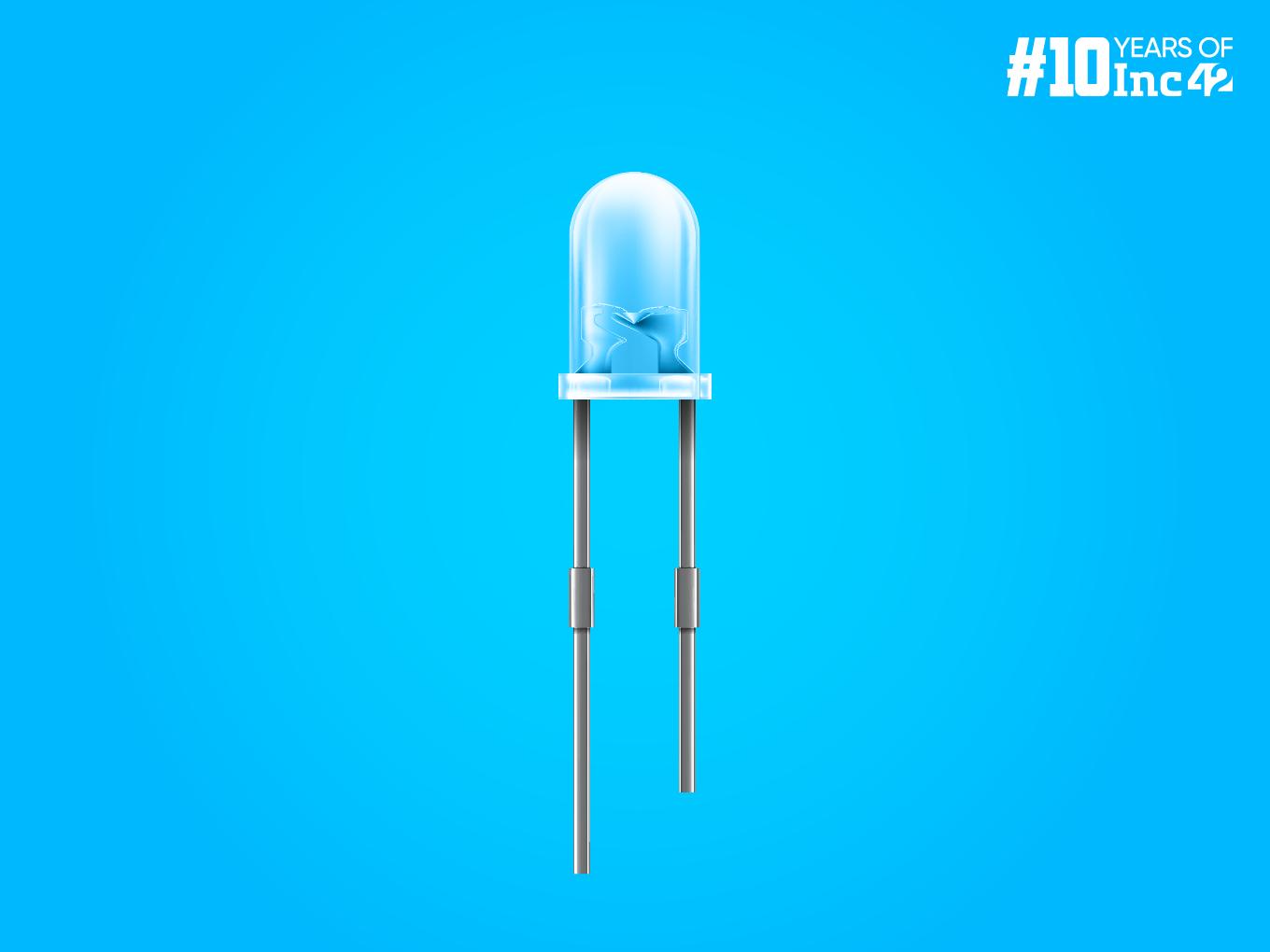What Is A Light-Emitting Diode?
A light-emitting diode (LED) is a semiconductor device that emits light when an electric current flows through it. LEDs function by converting electrical current into light through a process called electroluminescence. They are used in a wide variety of applications, including lighting, displays, and sensors.
How Do LEDs Work?
LEDs exploit the bandgap and electroluminescence abilities of semiconductors to convert electrical current into light. The following is a four-step explanation of how this happens:
- P-N Junction: An LED is built around a p-n junction formed by doping a semiconductor with impurities. This creates regions with excess holes (p-type) and electrons (n-type).
- Forward Bias: When a forward bias voltage is applied, it pushes electrons in the n-type region and holes in the p-type region towards the junction.
- Electron-Hole Recombination: In the junction, these energetic electrons recombine with holes, releasing energy exceeding the bandgap.
- Light Emission: This excess energy is emitted as photons (smallest particles of light) with a wavelength corresponding to the bandgap of the semiconductor material. The precise bandgap engineering of the semiconductor dictates the colour of the emitted light.
The Elusive Blue LEDs: Developing efficient blue LEDs proved significantly more challenging than red and green LEDs for two main reasons:
-
- Crystal Growth: Growing high-quality gallium nitride (GaN) crystals, the preferred material for blue LEDs, proved immensely difficult. Sapphire substrates, commonly used for GaN (mixture of nitrogen and gallium-containing gas) growth, have a significant lattice mismatch, leading to defects that hinder light emission.
- P-type Doping: Doping GaN to create p-type conductivity, crucial for efficient p-n junctions, presented another hurdle. Researchers struggled to find suitable dopants until breakthroughs with magnesium doping in the late 1980s.
While the invention of efficient blue LEDs wasn’t attributed to a single person, it resulted from the pioneering work of three individuals: Isamu Akasaki, Hiroshi Amano, and Shuji Nakamura. Their collective efforts were recognised by the 2014 Nobel Prize in Physics for revolutionising lighting technology.
How Are LEDs Used In Modern Electronics?
LEDs are ubiquitous in modern electronics due to their versatility and numerous advantages over traditional lighting sources. Here are a few uses that LEDs see in electronics:
- Visual Indicators: LEDs are widely used as indicator lights on a plethora of machines, ranging from sensors in generators to lights for vehicles, providing information on power status, operation mode, or error warnings. Their small size and low power consumption make them ideal for compact electronics.
- Displays: LEDs form the building blocks of various displays, from simple numeric displays in calculators to large screens. They offer superior brightness, contrast, and energy efficiency compared to traditional backlighting technologies.
- Illumination: LEDs are increasingly employed for general illumination purposes. High-power LEDs deliver efficient room lighting, while LED strips provide task lighting or accent lighting. Their dimmability and colour tunability allow for dynamic lighting control.
- Sensors: LEDs can function as light sources in optoelectronic sensors. For instance, infrared (IR) LEDs are used in proximity sensors and remote controls, while ultraviolet (UV) LEDs can be used in medical devices for sterilisation or biological sensing.
- Data Transmission: In some optocouplers, LEDs transmit data or signals between electrically isolated circuits by coupling light with photodetectors.
What Is The Future Of Light-Emitting Diodes?
The future of LEDs is poised to be even brighter, driven by advancements in materials science, design, and integration with other technologies. Here are some exciting trends to look forward to:
- Enhanced Efficiency And Sustainability: Researchers are constantly seeking ways to improve LED efficiency, squeezing out even more light per unit of energy consumed. Additionally, the focus on sustainable materials and manufacturing processes will likely lead to eco-friendly LED production.
- Improved Colour Fidelity And Human-Centric Lighting: Advancements in phosphor technology and LED design will lead to LEDs that more accurately reproduce the natural colour spectrum. This is particularly important for applications like art, retail, and healthcare, where precise colour rendering is crucial. Additionally, LEDs will be fine-tuned to better mimic natural daylight cycles for human-centric lighting that can improve our sleep patterns and well-being.
- Li-Fi And Integrated Communication: LEDs have the potential to become data transmitters, utilising Li-Fi technology to provide high-speed, secure wireless communication by flickering light at undetectable rates. This could revolutionise internet connectivity in various settings, especially in areas with congested Wi-Fi signals.
- Flexible And Organic LEDs: The development of flexible and organic LEDs will open up new design possibilities for lighting and displays. Imagine bendable phone displays or curved lighting panels seamlessly integrated into walls or furniture.
- Micro LEDs And Mini LEDs: Microscopic and miniaturised LEDs hold immense potential for high-resolution displays with superior brightness, contrast, and viewing angles. These advancements could usher in a new era for TVs, monitors, and wearable displays.








